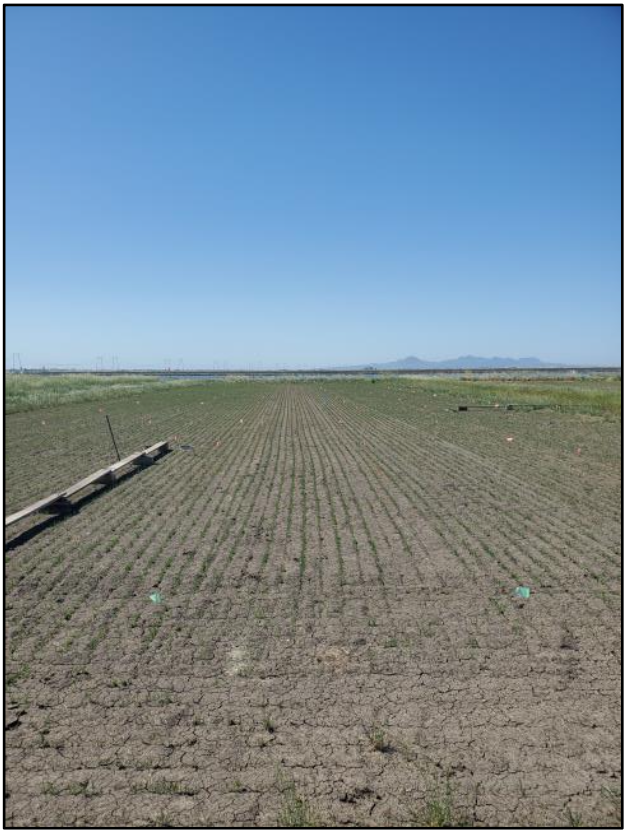
1. Fallow stale-seedbed (FSS): field was fallowed in 2022. It was disked and leveled then. It was not flooded during the winter. No tillage was done in 2023.
2. No-till. We have three strict NT treatments. Rice was grown in 2022. After harvesting (harvested to limit ruts), the straw in the field was subjected to one of three treatments:
a Chopped (NT-Chop)
b. Half removed to simulate baling (NT-Remove)
c. Burned (NT-Burn)
We planted May 2, 2023, flushed once after planting and then applied a permanent flood on June 2. Our results were very promising. Yields were highest (86-87 cwt/ac) following a fallow year (FSS); and those yields were comparable to water-seeded yields at the station. Yields in the other no-till systems were a bit lower.
This year, we are doing a more rigorous and replicated study with three treatments from last year: FSS, NT- Remove and NT-Chop. These are being compared to a water-seeded control. We are quantifying water use, examining different N and weed management strategies, quantifying pests and diseases, and taking greenhouse gas measurements.
This year we planted all NT treatments on May 1. It was the first planted rice at the Rice Experiment Station. We have a good stand in all treatments. We applied herbicides and fertilizer the week of May 26 and the permanent flood was applied on May 29 and 30.
We would like to invite you all out to see this experiment and discuss this system. We are having a field day at the Rice Experiment Station on June 18 starting at 9:00 am. We encourage anyone interested to come.